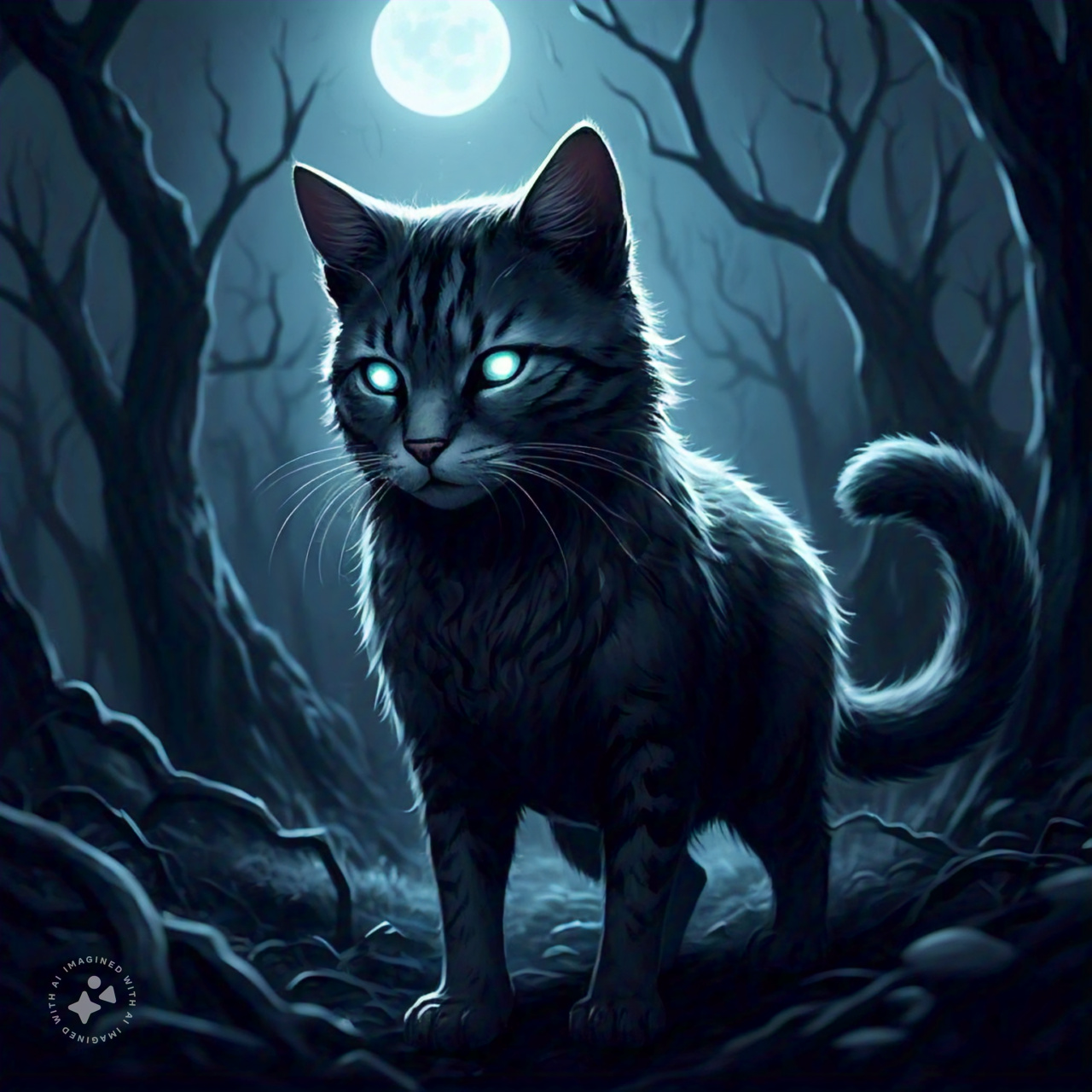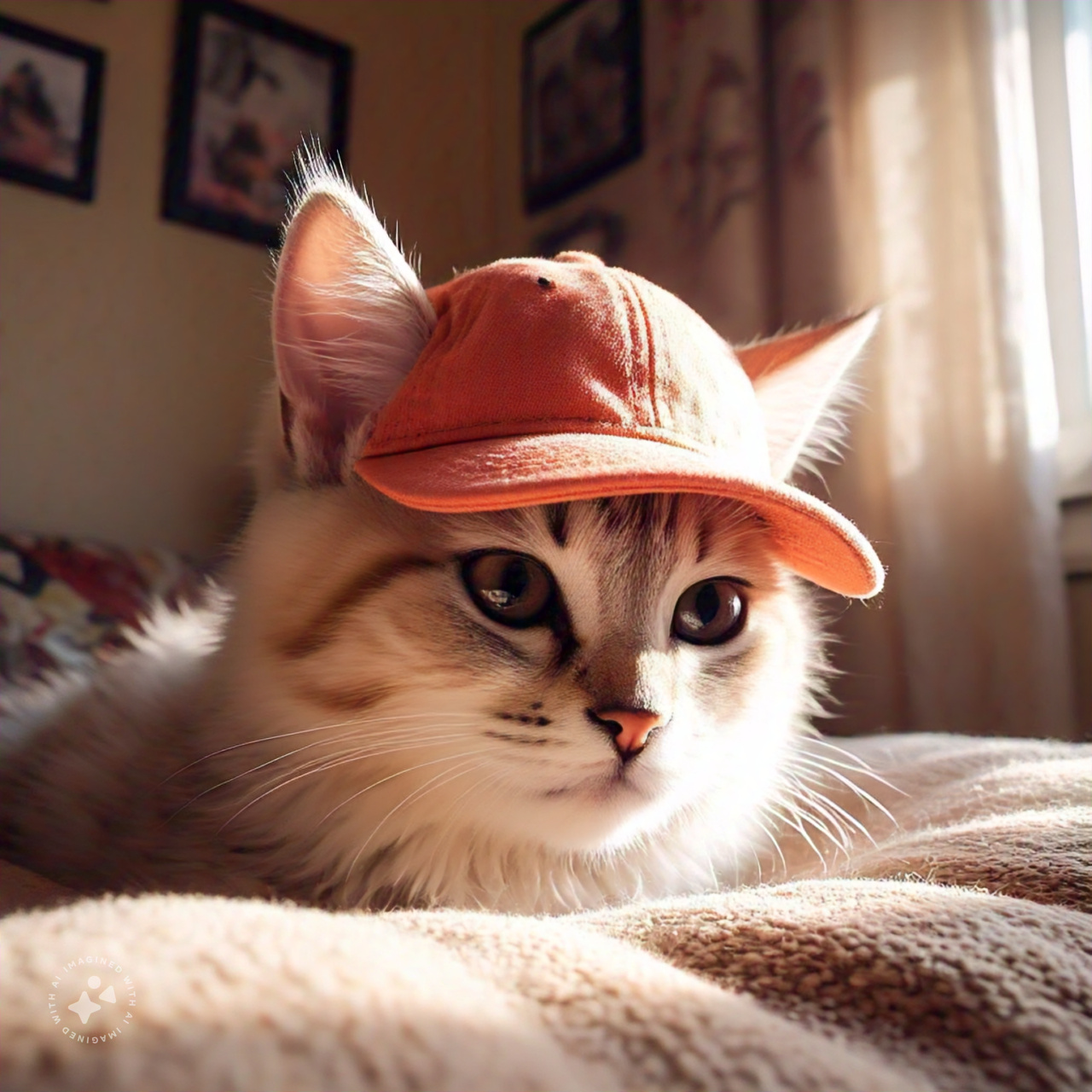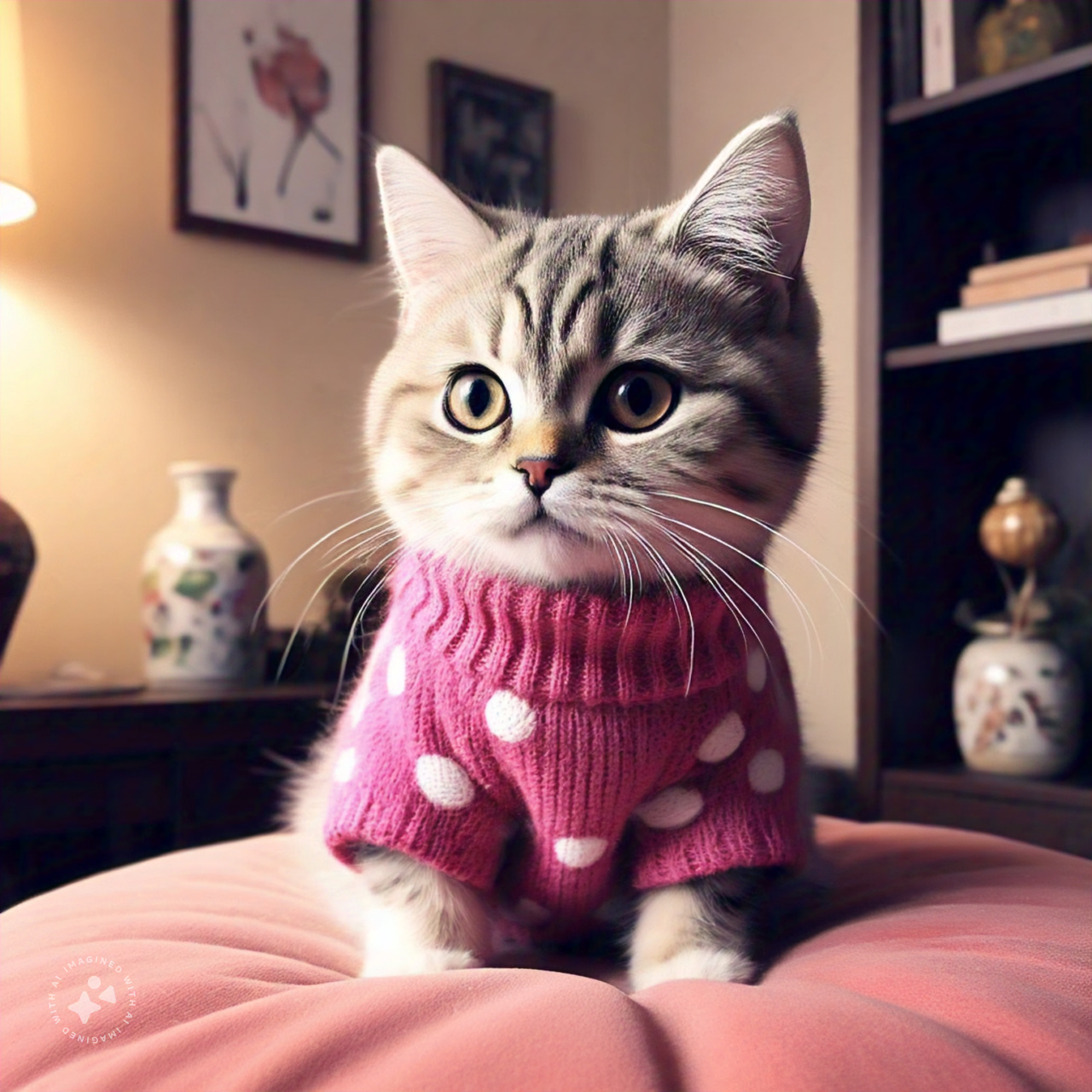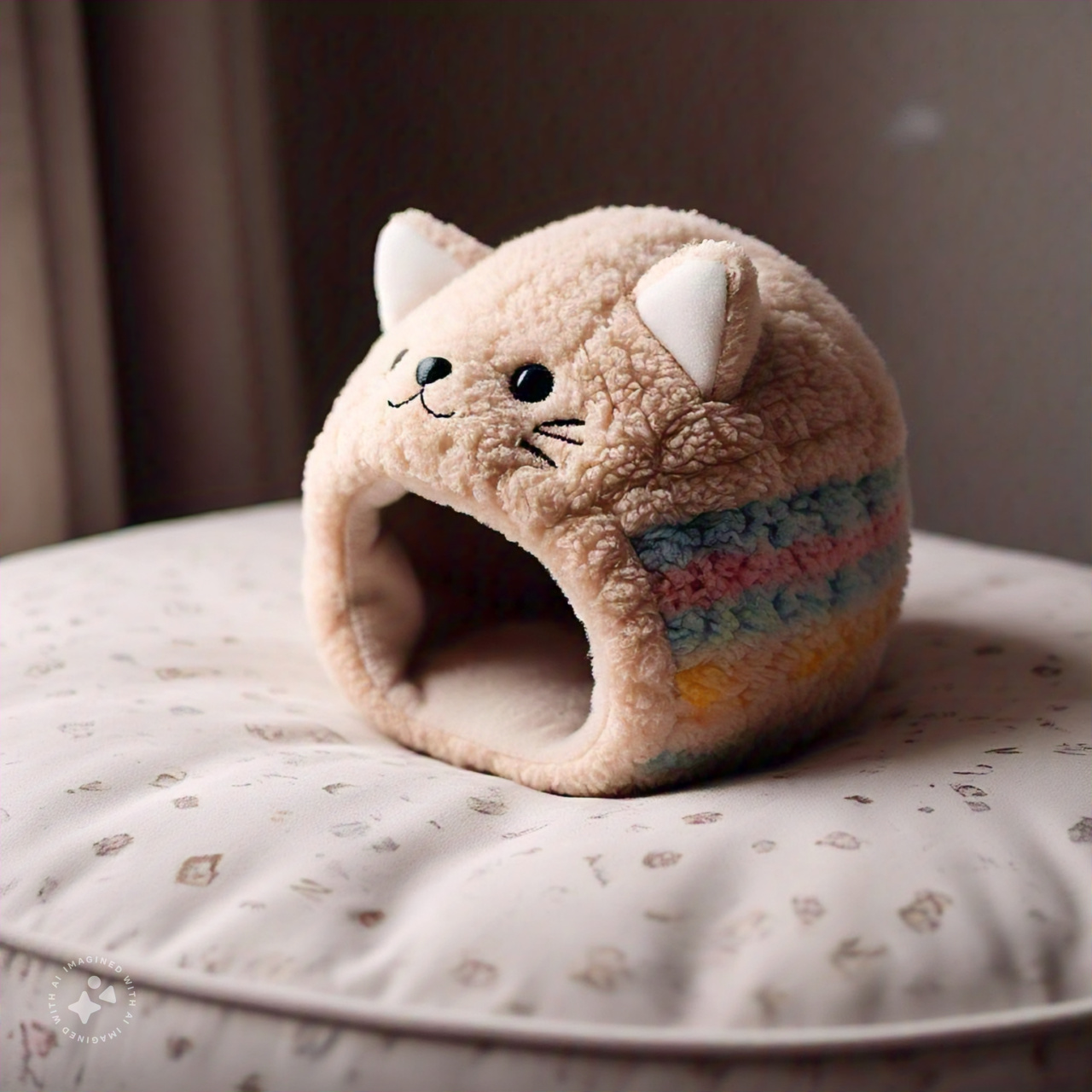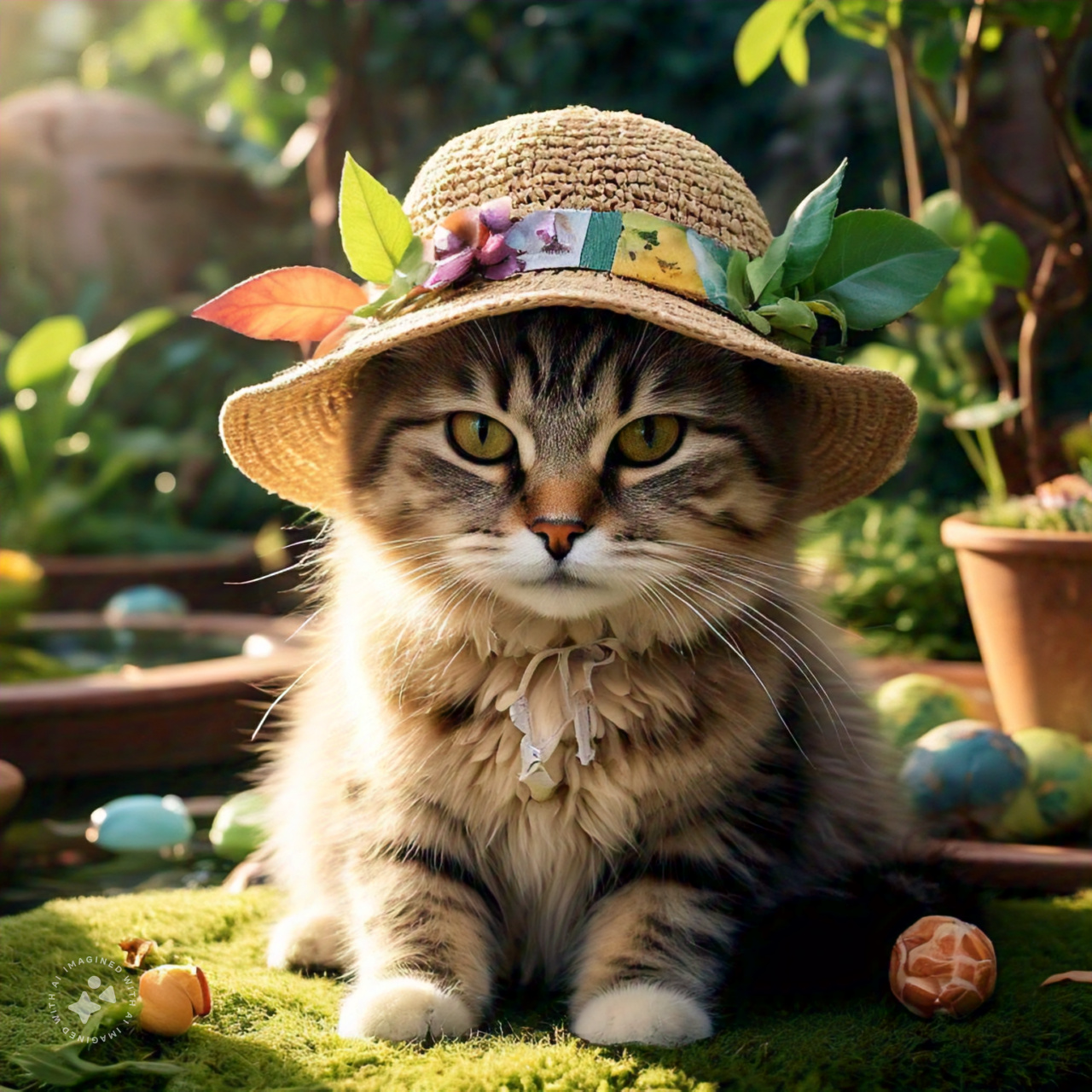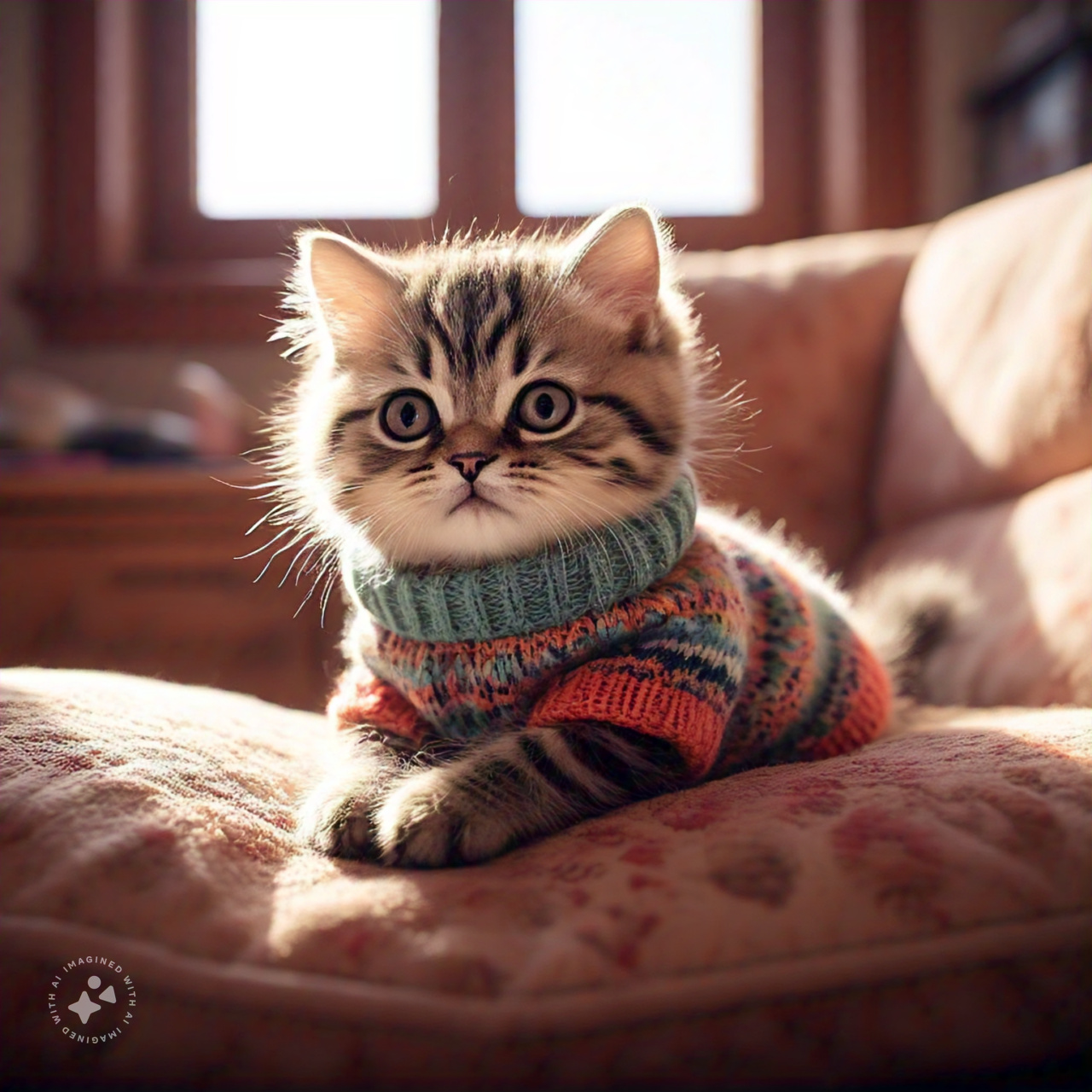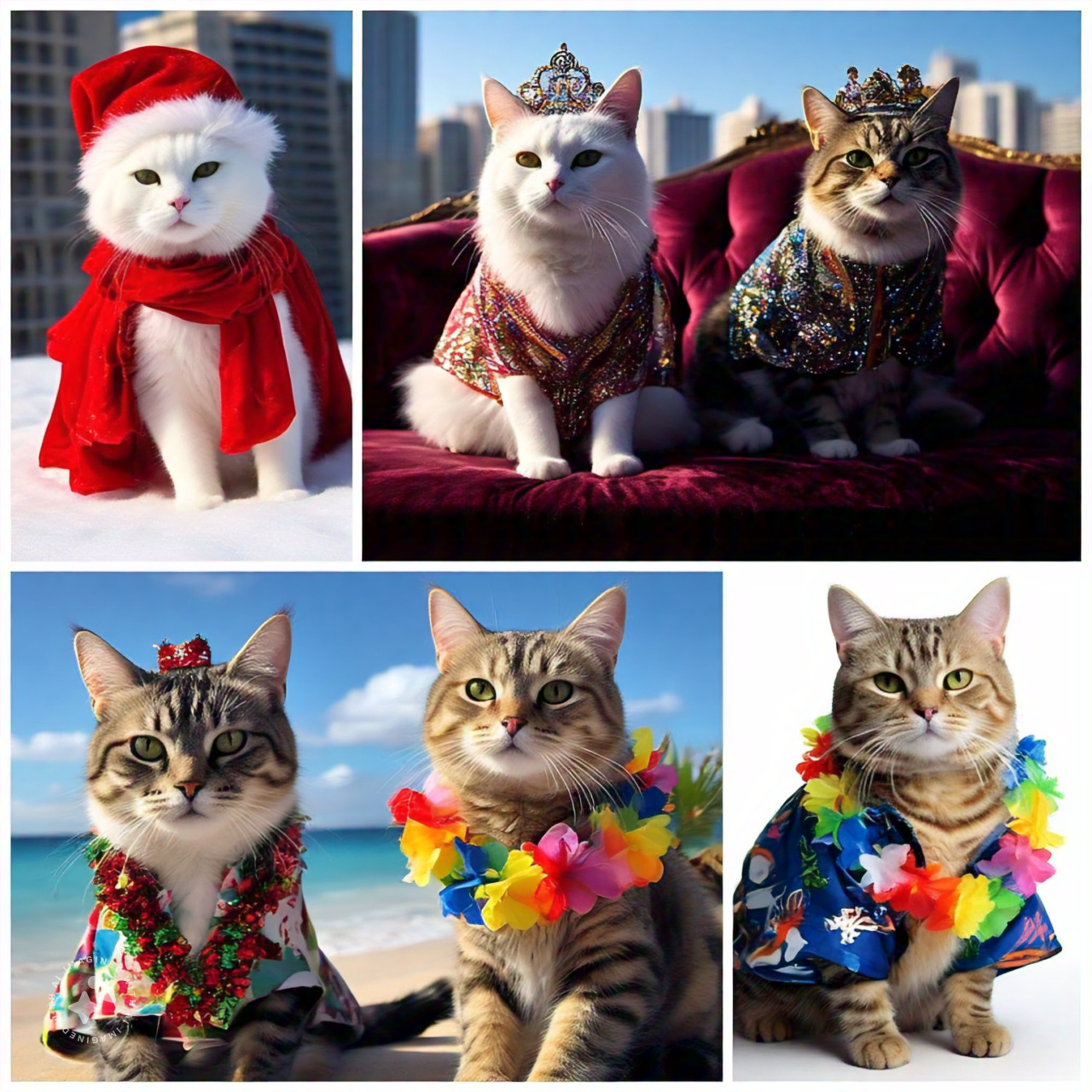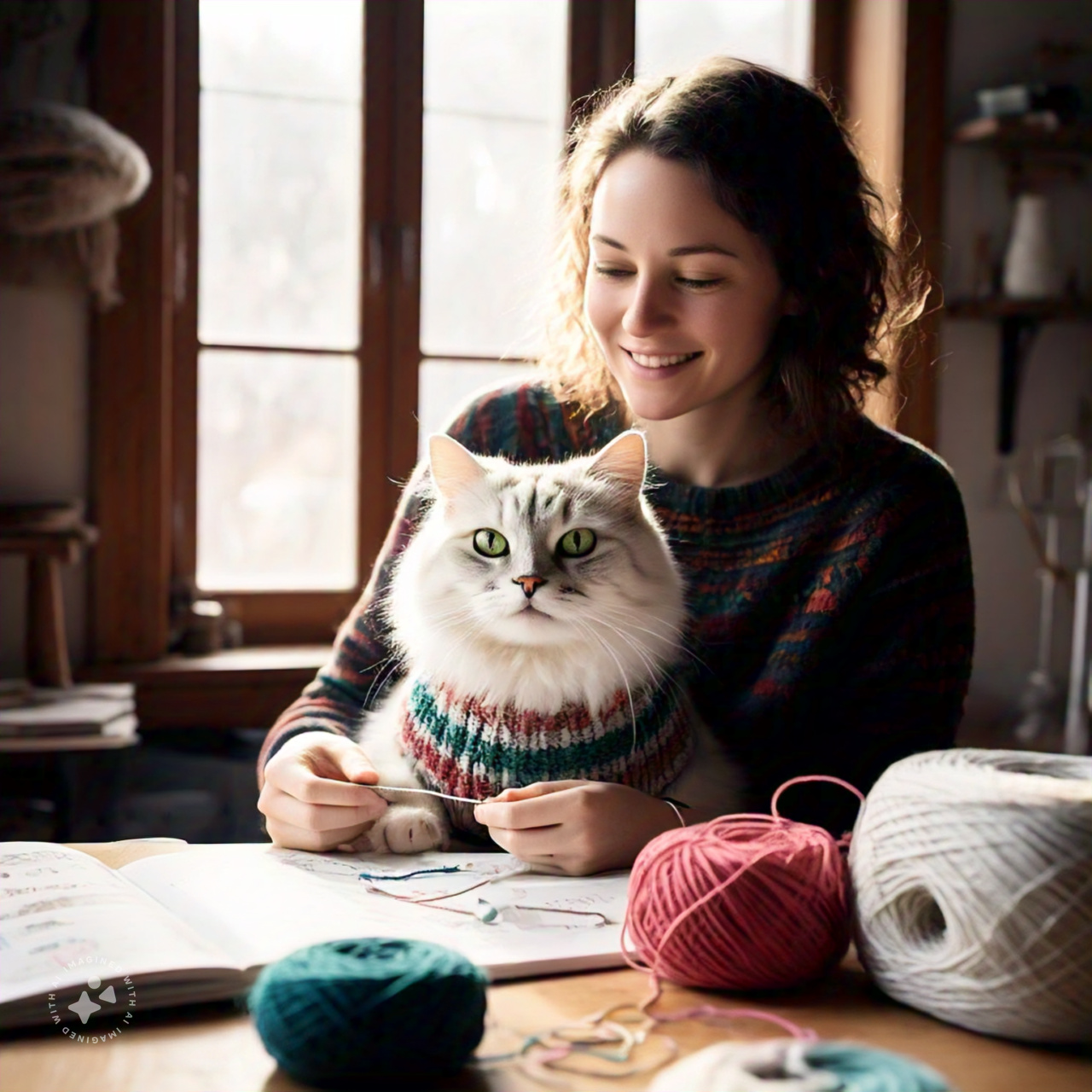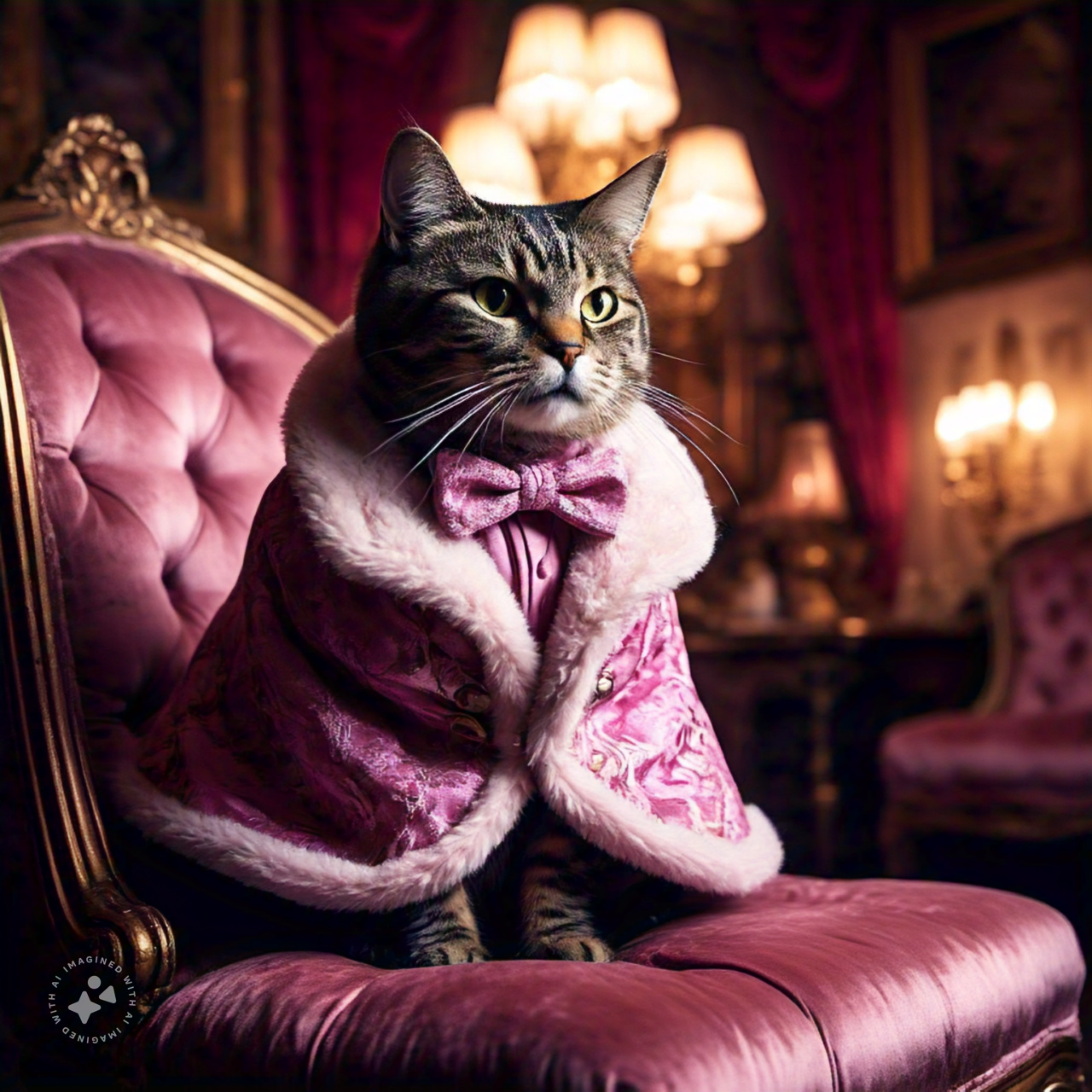Why Cats Are Halloween’s Perfect Symbol: A Deep Dive into Mythology and Folklore
When October rolls around, the sight of cats—particularly black ones—becomes a common symbol associated with Halloween. From decorations to costumes, these enigmatic creatures evoke a sense of mystery and intrigue that perfectly aligns with the spirit of the holiday. While many people may think of cats simply as cute or mysterious pets, the symbolism of cats in relation to Halloween is rooted in deep and complex folklore, mythology, and historical traditions.
Cats have long been regarded as mystical creatures, often linked to the supernatural. Their nocturnal nature, keen senses, and ability to move silently through the night have made them symbols of the unknown, bridging the gap between the living and the spiritual world. Halloween, a time when the veil between these realms is believed to be thinnest, is the perfect occasion for cats to take center stage in the symbolic landscape.
This article will explore why cats, especially black ones, are so deeply connected to Halloween. It will delve into their historical role in folklore, the symbolism they carry, their significance in various cultures, and their transformation into the modern-day icon of Halloween. By examining their rich mythical heritage, we can gain a deeper understanding of why these creatures are so inextricably linked to one of the spookiest times of the year.
The Historical Roots of Cats in Folklore
Cats have been a part of human history for thousands of years, with their presence in various ancient cultures playing a significant role in shaping their mystical reputation. From the ancient Egyptians to medieval Europe, the perception of cats has been shaped by cultural beliefs, superstitions, and mythological figures.
Ancient Egypt: The Reverence of Cats
The story of the cat’s connection to the supernatural begins in ancient Egypt, where cats were not only admired but also worshipped. The Egyptians revered cats for their elegance, grace, and hunting prowess, but they also saw them as powerful protectors of the home and symbols of the divine. The goddess Bastet, who was often depicted as a lioness or a woman with the head of a lioness or domestic cat, was one of the most prominent deities in the Egyptian pantheon.
Bastet was the goddess of home, fertility, and protection, but she also had a darker side, associated with war and the protection of the dead. Her association with both nurturing and protecting the household, as well as with fierceness in battle, imbued cats with a dual nature, representing both creation and destruction. This duality contributed to the idea that cats could bridge the world of the living and the afterlife, making them natural figures to be associated with death and the unknown.
Cats were so highly regarded in ancient Egypt that they were often kept as companions in temples and royal households. Killing a cat, even accidentally, was considered a grave offense, punishable by death. The Egyptian reverence for cats and their mystical qualities laid the groundwork for their later association with the supernatural in other cultures.
The Middle Ages: Cats and Witchcraft
As the influence of Christianity spread across Europe during the Middle Ages, the perception of cats began to shift. In particular, black cats became increasingly associated with witchcraft and the occult. Many superstitions surrounding cats originated from this period, as they were believed to be familiars of witches—supernatural entities that assisted witches in performing spells and engaging in dark magic.
The belief in witches and the supernatural reached its peak during the witch hunts of the 16th and 17th centuries. Black cats, in particular, were thought to possess evil powers and were often believed to be shape-shifting witches in disguise. This association between cats and witches led to widespread fear and mistrust, and many black cats were killed during these witch hunts, as people believed they were possessed or working for malevolent forces.
The fear of witches and their connection to cats persisted well into the 19th century, fueling the idea that these animals were linked to dark magic, the devil, and the supernatural world. This association with witches and evil contributed to the dark, mysterious aura that continues to surround black cats to this day.
Cats as Protectors and Guardians
In addition to their darker associations, cats have also been seen as protectors in various cultures. In some parts of Europe, cats were thought to have the ability to ward off evil spirits. Their ability to hunt and kill vermin, particularly rats, also contributed to their status as guardians of the home. During the plague years, when rats and fleas carried disease, cats were considered vital protectors, as they helped control the rodent population.
In some cultures, it was believed that cats could sense supernatural forces, protecting their owners from harmful spirits or otherworldly dangers. This belief in cats as guardians of the home made them important figures in folklore, as they were thought to possess an innate ability to detect and protect against evil forces.
The Symbolism of Cats in Different Cultures
Cats, particularly black ones, have been revered, feared, and even worshipped throughout various cultures across the world. Their symbolism is multi-layered and reflects a deep connection between humans and the mysterious, the supernatural, and the unknown. By exploring how different societies have viewed cats, we can better understand their central role in Halloween’s symbolism.
Ancient Greece and Rome: Cats and the Divine
In Ancient Greece and Rome, cats were admired for their beauty and mysterious behavior, although they were not as central to mythology as they were in Egypt. In Greece, the goddess Artemis, who was associated with the moon, hunting, and fertility, was often depicted with a cat by her side. Artemis’s close connection to nature and the wild, alongside her ability to move freely between the mortal world and the divine, mirrored the cat’s own mysterious movements through the night.
The Greeks also believed that cats were the guardians of the home, keeping away vermin and evil spirits. Although the concept of witches and black magic was not as prominent in ancient Greece as it would be in later European cultures, the association of cats with the moon and the divine made them figures of mystery, aligning with the celestial, unknown forces that Halloween evokes.
In Rome, cats were similarly valued for their ability to control pests, especially rats and mice, which were common in cities. However, their role was less directly tied to the supernatural, and they were seen more as practical companions in Roman households. Nonetheless, their nocturnal behavior and enigmatic nature helped them retain an aura of mystery that contributed to their symbolic presence in various traditions.
Japan: The Myth of the Bakeneko
In Japan, cats are often associated with both good fortune and dark supernatural forces. The most famous cat-related folklore in Japan is the myth of the bakeneko, a supernatural cat capable of shape-shifting, casting spells, and sometimes even turning into a vengeful spirit. The bakeneko is believed to have the power to curse or bring bad luck to people, and it was thought that a cat who lived to a very old age could develop these abilities. This belief in the bakeneko as a malevolent entity added to the reputation of cats as creatures linked to the supernatural.
In contrast, there is also the more benevolent figure of the “maneki-neko,” or the “beckoning cat,” which is often seen in Japanese culture as a symbol of good luck and prosperity. The image of a cat raising its paw to beckon is commonly found in businesses and homes, where it is believed to attract wealth and good fortune. The contrast between the malevolent bakeneko and the lucky maneki-neko illustrates the dual nature of cats in Japanese culture, with both light and dark symbolism attached to these animals.
While the bakeneko myth may seem more aligned with the darker aspects of Halloween, the presence of maneki-neko represents the multifaceted nature of cats in folklore. In the context of Halloween, this duality is significant, as it reflects the broader theme of the holiday: a time when the boundaries between good and evil, the living and the dead, become blurred.
Norse Mythology: Cats and the Goddess Freyja
In Norse mythology, cats were closely associated with the goddess Freyja, who was revered as the goddess of love, beauty, fertility, and war. Freyja was often depicted riding in a chariot pulled by two large cats, reinforcing the animal’s sacred status in Norse belief systems. As a goddess who could shape-shift and move freely between different worlds, Freyja’s connection to cats further emphasized their mystical qualities.
Freyja’s cats were seen as protectors of the home, particularly in times of battle or conflict, symbolizing both strength and nurturing. The connection between cats and this powerful goddess of love and war suggests that cats were perceived as creatures capable of walking between opposing forces, bridging realms of beauty and chaos, life and death. This dual role reflects the symbolic power that cats hold, especially during a time like Halloween, when the natural world and the supernatural world seem to intersect.
The association with Freyja also highlights the cat’s place in mythologies as a divine, almost sacred creature. Cats were revered by the Norse as animals that could aid in protection, and their connection to the goddess reinforced their status as symbols of both power and grace.
Celtic Traditions: Cats and the Otherworld
In Celtic traditions, cats were often linked to the Otherworld, a realm inhabited by spirits, fairies, and the dead. The Celts believed that the veil between the living and the dead was especially thin during certain times of the year, particularly around the festival of Samhain, which is the precursor to modern Halloween. Samhain marked the end of the harvest and the beginning of winter, and it was a time when spirits were thought to roam freely between the worlds.
Cats were seen as creatures that could traverse these boundaries between the mortal world and the Otherworld, making them natural guides and protectors in the transition between life and death. In some Celtic myths, cats were believed to have the ability to see and communicate with spirits, and they were often considered to be the guardians of the dead. Their eerie, nocturnal presence made them symbols of mystery, associated with the unknown and the supernatural forces that were believed to be especially active during Samhain.
One of the most well-known stories in Celtic folklore involving cats is the tale of the “Cat Sith,” a fairy creature resembling a large black cat that was said to roam the Scottish Highlands. The Cat Sith was believed to steal the souls of the dead before they could reach their final resting place. This ominous figure, linked to both the spiritual world and the natural world, further reinforces the cat’s connection to death and the afterlife—an association that makes the black cat a fitting symbol for Halloween.
The Symbolism of Cats in Halloween Today
While cats’ symbolism in different cultures varies, certain themes remain constant. Cats are seen as liminal creatures, bridging the gap between different realms—life and death, the mortal and the divine, the known and the unknown. They are also associated with mystery, as their behaviors are often difficult to understand, and their movements seem to defy the natural order of things. This sense of mystery and ambiguity is one of the core reasons why cats, especially black ones, have become such a central symbol of Halloween.
Their connection to witches, spirits, and the supernatural has been solidified over centuries, and as Halloween has evolved, so too has the role of the cat in this spooky season. Whether they are seen as protectors of the home, magical familiars, or shadowy creatures of the night, cats continue to embody the eerie, otherworldly nature that Halloween celebrates.
The Evolution of Cats in Halloween Traditions
Cats, particularly black ones, have become synonymous with Halloween in modern times, but their journey to becoming a central symbol of the holiday is intertwined with centuries of shifting cultural beliefs and practices. From ancient folklore to the commercialization of Halloween in the 20th century, the role of cats has evolved and adapted, growing stronger as Halloween itself transformed into a widely celebrated, globally recognized event.
The Birth of Modern Halloween: Cats and the Influence of the Victorian Era
The modern Halloween celebration, which we recognize today, began to take shape during the late 19th and early 20th centuries. Much of Halloween’s contemporary imagery, including black cats, witches, ghosts, and pumpkins, was influenced by the Victorian era’s fascination with the supernatural and the occult. The Victorian period saw a resurgence of interest in gothic literature, spiritualism, and witchcraft, which fueled the public’s fascination with themes of death, the afterlife, and the paranormal.
During this time, Halloween was not yet the mass-celebrated holiday it would become, but it was marked by private gatherings and “all-hallows” festivals, many of which were tied to the ancient celebration of Samhain. The growing interest in all things eerie led to a reinvention of Halloween as a time for fun, frights, and elaborate rituals. Cats, especially black ones, were increasingly featured in popular Halloween imagery, symbolizing mystery, mischief, and the uncanny.
In Victorian society, black cats were often seen as omens of bad luck, and their association with witches and the supernatural solidified their role in Halloween’s darker traditions. Halloween imagery at the time drew heavily on these superstitions, incorporating black cats into decorations, cards, and costumes, further entwining them with the holiday’s spooky and mysterious atmosphere.
Cats and the Rise of Halloween as a Commercial Holiday
By the early 20th century, Halloween began to emerge as a commercial holiday in the United States, with businesses and stores looking to capitalize on the growing demand for Halloween-themed goods. This marked the beginning of a cultural shift, as Halloween moved from a more solemn, ritualistic observance into a widely commercialized event focused on fun, costumes, and entertainment.
Cats, particularly black ones, became popular motifs for Halloween decorations, with mass-produced items such as postcards, paper lanterns, and masks featuring these creatures in a variety of spooky and playful forms. These images began to be associated with the fun and mischievous aspects of Halloween, while still maintaining their eerie, mysterious qualities. The symbolism of the black cat as a creature tied to the supernatural was balanced with its portrayal as a more playful, whimsical figure during Halloween festivities.
This shift reflected the broader trend of Halloween becoming more lighthearted and family-friendly, as it morphed into an event for all ages. Yet, even as the holiday grew more commercial, the link between cats and Halloween remained firmly intact. Cats, particularly black cats, became integral parts of the imagery and culture surrounding the holiday, symbolizing both the spooky and the playful aspects of Halloween.
Cats in Popular Culture: From Horror to Fun
As Halloween continued to evolve throughout the 20th century, cats became even more ingrained in popular culture, thanks in large part to their recurring presence in horror films, literature, and folklore. During the 1940s and 1950s, black cats were featured in a wide range of films, television shows, and cartoons. These portrayals often drew upon their association with witchcraft, but also added elements of humor and playfulness.
One of the most iconic representations of a cat in Halloween and horror culture is the character of Salem from the popular television series “Sabrina the Teenage Witch,” which began as a comic book series in the 1960s and was later adapted into a television show. Salem, a sarcastic and witty black cat, became an enduring figure of Halloween-themed media, combining the mysterious and supernatural qualities of cats with a more lighthearted, comedic tone. This portrayal of cats as magical yet amusing creatures helped solidify their place in modern Halloween traditions.
Furthermore, the cat’s status as an enduring Halloween icon was further reinforced by its presence in countless Halloween-themed cartoons, commercials, and advertisements. From the classic image of a black cat crossing your path to its appearance in animated specials and decorations, the cat became a fixture of Halloween’s spooky and fantastical landscape. It was no longer just a symbol of superstition and fear, but an integral part of the celebration, evoking both eerie suspense and a sense of fun.
Cats in Halloween Costumes and Decorations
Perhaps one of the most obvious and visible ways in which cats are celebrated during Halloween is through costumes and decorations. The black cat costume has become a classic Halloween choice, worn by children and adults alike to evoke both the mystique and the mischief associated with the holiday. These costumes often include iconic features such as pointed ears, whiskers, and a tail, with the cat’s dark fur symbolizing its mysterious, nocturnal nature.
In addition to costumes, black cats are often depicted in Halloween decorations in a variety of creative ways. From spooky yard displays featuring cats with glowing eyes to hanging decorations that mimic the movements of a cat in the moonlight, these images evoke the eerie atmosphere that is a hallmark of Halloween. Whether they appear on front porches, in windows, or as part of haunted house displays, black cats serve as an unmistakable reminder of the holiday’s connection to the supernatural.
Modern Halloween decorations also play on the playful and mischievous side of cats, with smiling and friendly black cat figures alongside their more sinister counterparts. This range of portrayals—from eerie, glowing-eyed cats to cute, cartoonish renditions—demonstrates how cats have come to embody both the frightening and the fun aspects of Halloween, ensuring their place as a central symbol of the season.
The Continued Popularity of Cats in Halloween Celebrations
Even as Halloween has evolved into a global celebration with widespread commercial appeal, the cat’s role as a symbol of mystery, magic, and mischief remains strong. Cats, particularly black ones, continue to appear in Halloween media, decorations, and costumes, maintaining their reputation as the perfect animal for the holiday.
The popularity of black cats during Halloween is a reminder of the complex symbolism they carry, blending associations with the supernatural and the unknown with their playful, whimsical presence in modern festivities. Whether they are seen as protectors from evil spirits, as familiars of witches, or as mischievous creatures prowling the night, cats remain an enduring symbol of Halloween’s spooky magic.
The Lasting Appeal of Cats in Halloween Tradition
The enduring association between cats and Halloween is a testament to the rich cultural, historical, and symbolic significance of these enigmatic creatures. Over the centuries, cats—especially black ones—have evolved from revered beings in ancient mythologies to symbols of mystery, superstition, and magic. Their roles in folklore, religion, and popular culture have made them the perfect embodiment of the eerie and otherworldly spirit that defines Halloween.
Cats as Symbols of Mystery and the Supernatural
One of the most compelling reasons for the continued popularity of cats during Halloween is their inherent connection to mystery and the supernatural. Cats, by nature, are creatures that walk the line between the known and the unknown. Their nocturnal habits, quiet movements, and ability to slip in and out of the shadows have always intrigued and unsettled humans. This sense of otherworldliness made them ideal symbols for the supernatural world, where the boundaries between the living and the dead are thought to become blurred, especially during the Halloween season.
Cats, in many cultures, have been viewed as mediators between the human realm and the spirit world. Whether seen as protectors of the home, magical companions to witches, or creatures of the night that can navigate between life and death, their role as intermediaries between realms makes them a fitting representation of Halloween. As the veil between the living and the dead is believed to thin during this time of year, cats symbolize the connection to the mystical forces that are said to be at play during the holiday.
Cats and Halloween’s Dual Nature
Halloween is a celebration that embodies duality: light and dark, life and death, the known and the unknown. Cats, with their multifaceted symbolism, are perfectly aligned with this dual nature. They are creatures of both beauty and danger, tenderness and wildness, magic and mischief. The cat’s ability to represent both the playful, lighthearted aspects of Halloween—through costumes and decorations—and the darker, more sinister elements—through their association with witchcraft, ghosts, and spirits—makes them an ideal symbol for a holiday that celebrates both fear and fun.
The cat’s connection to witches, magic, and the occult also highlights the complex relationship between the known and the unknown. Historically, cats were seen as the companions of witches, beings who were thought to possess knowledge of secret worlds. Witches themselves were often seen as figures who straddled the line between the living and the supernatural, and their relationship with cats emphasized the belief that the boundary between these realms could be navigated through magic. This association remains strong in modern Halloween traditions, where black cats continue to evoke a sense of mystery, fear, and fascination.
Cats in Popular Culture: From Horror to Playfulness
The evolution of cats in popular culture has ensured their continued place as Halloween icons. While cats have long been symbols of the supernatural, their depiction in modern media has evolved to include both eerie, terrifying portrayals and playful, humorous representations. The transition from the fearful, ominous black cat to the quirky, comical cat seen in many Halloween decorations and costumes highlights how Halloween has become a celebration that is both spooky and fun.
Cats like Salem from Sabrina the Teenage Witch and the playful black cats in cartoons and advertisements show how these creatures have been reimagined for modern Halloween celebrations. Their continued presence in popular culture reinforces their dual role in the holiday: as creatures that can provoke fear, but also as beings that embody the whimsical, light-hearted side of Halloween. Whether as familiar spirits or mischievous companions, cats remain beloved figures in the Halloween experience, cherished for both their mystique and their charm.
The Symbolism of the Black Cat in Modern Times
In today’s world, the black cat continues to be a powerful symbol of Halloween. The association between black cats and bad luck, while still prevalent in some cultures, is being increasingly overshadowed by the idea of the black cat as a creature of beauty, magic, and mystery. While black cats were once feared and shrouded in superstition, their depiction during Halloween has shifted toward a more playful celebration of their unique qualities.
The black cat’s mysterious, elusive nature is perfectly suited to Halloween’s spirit. Its sleek, dark fur, glowing eyes, and quiet movements make it the ideal creature to represent the unknown, the eerie, and the magical aspects of the holiday. Moreover, the black cat’s resilience in the face of superstition and its continued popularity as a Halloween symbol reflect the enduring fascination humans have with this enigmatic creature.
Conclusion: The Timeless Connection Between Cats and Halloween
The connection between cats and Halloween is both ancient and timeless, stretching across centuries of mythology, folklore, and cultural transformation. From their revered status in ancient Egypt to their role in modern Halloween festivities, cats have evolved from symbols of protection and divinity to creatures associated with magic, mischief, and mystery. Their dark, enigmatic nature, coupled with their ties to witches, spirits, and the supernatural, has made them the perfect symbol for Halloween.
As Halloween continues to grow in popularity around the world, the cat remains at the heart of the holiday’s rich symbolism. Whether through their role as protectors of the home, mystical familiars, or playful companions in costumes and decorations, cats continue to evoke the eerie and magical spirit of Halloween. They embody the duality of the holiday—both spooky and fun—making them the ideal creature to represent the mysterious, supernatural world that comes alive on Halloween night.
Ultimately, cats are more than just creatures of folklore or Halloween decorations. They are symbols of the mysteries that lie beyond our understanding, of the magic that exists in the world, and of the connection between life, death, and the unknown. Their enduring appeal ensures that they will remain a central figure in Halloween celebrations for generations to come, forever intertwined with the magic and mystery of this spooky season.
